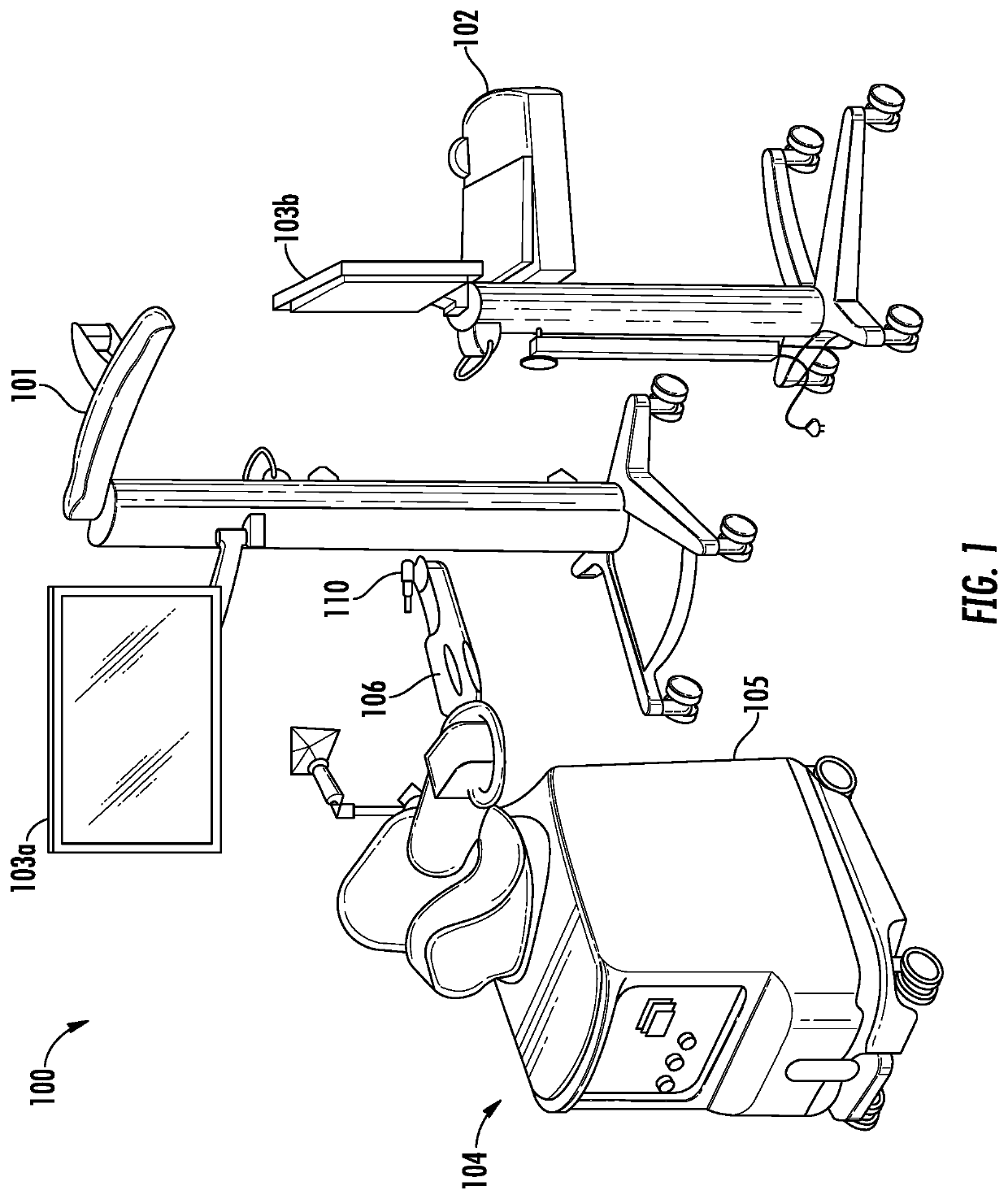Systems and methods for a robotic-assisted revision procedure
a robotic and assisted surgery technology, applied in the field of robotic assisted orthopedic surgery, can solve the problems of increased bone loss, difficult to perform, and inability to always accurately diagnose, and achieve the effect of dispensing the bone implant and minimizing overcutting the bon
- Summary
- Abstract
- Description
- Claims
- Application Information
AI Technical Summary
Benefits of technology
Problems solved by technology
Method used
Image
Examples
Embodiment Construction
[0028]Before turning to the figures, which illustrate the exemplary embodiments in detail, it should be understood that the application is not limited to the details or methodology set forth in the description or illustrated in the figures. It should also be understood that the terminology is for the purpose of description only and should not be regarded as limiting.
[0029]The present disclosure introduces a robotic assisted approach to support a revision procedure of a joint, such as the knee joint or the hip joint, by allowing precise removal of a primary implant with minimal bone loss and while reducing the time needed to remove the primary implant. When bone loss is minimized, the number of revision procedures that may be performed on an individual patient during their lifetime increases.
[0030]Though the present disclosure makes reference to the knee and the hip joint, and revisions for the knee and the hip, the systems and methods disclosed herein are equally applicable to other...
PUM
 Login to View More
Login to View More Abstract
Description
Claims
Application Information
 Login to View More
Login to View More - R&D
- Intellectual Property
- Life Sciences
- Materials
- Tech Scout
- Unparalleled Data Quality
- Higher Quality Content
- 60% Fewer Hallucinations
Browse by: Latest US Patents, China's latest patents, Technical Efficacy Thesaurus, Application Domain, Technology Topic, Popular Technical Reports.
© 2025 PatSnap. All rights reserved.Legal|Privacy policy|Modern Slavery Act Transparency Statement|Sitemap|About US| Contact US: help@patsnap.com



